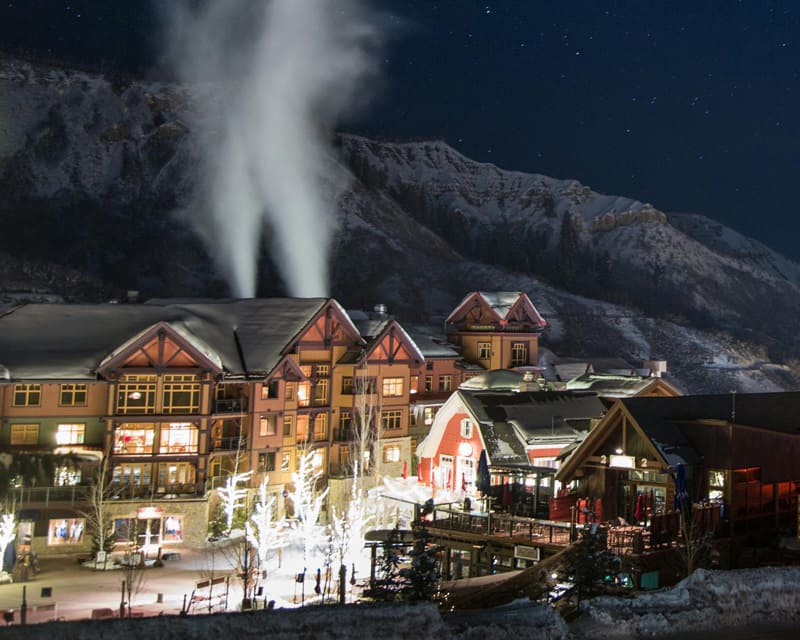Cities in America’s snowy mountains, particularly those surrounding ski resorts, register notably lower crime rates compared to their urban counterparts. This article investigates why ski resort destinations like Aspen, Vail, Park City, Breckenridge, Lake Tahoe, Telluride, Jackson Hole, Big Sky, Stowe, and Mammoth Mountain are among the safest in the nation, utilizing data and theories to show the factors contributing to their security.

Opinion: Let’s be honest, when it comes to cities where its mostly only rich people can go there, you’re going to expect it to be safer. That being said, this logic then does not tell us why places like the center of San Francisco, Hollywood Los Angeles, and basically all of Manhattan, are still loaded with crime. So it will be looked at from other angles as well.
Data indicates that ski resort cities such as Aspen and Vail have crime rates that are substantially lower than national averages. For example, Aspen’s violent crime rate is less than half the national average, while Vail’s property crime rate is significantly below Colorado’s overall rate.
Exploring the Reasons for Safety: Several factors may contribute to the low crime rates and overall safety in these areas:
- Economic Status: These cities attract a wealthier demographic due to the high costs associated with skiing and real estate. Higher economic status communities have more resources for crime prevention and a lower likelihood of crime occurrence, enhancing overall safety.
- Community Dynamics: The close-knit nature of ski resort communities plays a crucial role in their safety. These cities often have a small, stable population of year-round residents who form tight-knit communities, fostering a sense of mutual responsibility and care. In such environments, residents are more likely to know each other by name, participate in local governance, and engage in neighborhood watch activities, which naturally deter criminal activities.
- The seasonal influx: With tourists brings additional vigilance, as the community and local businesses work together to ensure the safety of visitors, upon whom their economy largely depends. This collective effort includes organizing community-led safety programs, neighborhood patrols, and public safety awareness campaigns, all aimed at maintaining the locale’s reputation as a safe and welcoming destination.
- Community events: From local festivals to town hall meetings, also strengthen community bonds and enhance collective efficacy — the community’s ability to maintain effective social control and prevent crime. Strong community ties mean that any unusual or suspicious activity is quickly noticed and reported, contributing to lower crime rates.
- Law enforcement: In ski resort cities is law enforcement is tailored to the unique needs and challenges of these areas. With the safety of both residents and a large number of visitors in mind, local police forces are adept at managing the particular dynamics of these tourist-centric locations. Many ski resort cities invest in a visible police presence, not only as a deterrent to crime but also to provide a sense of security for tourists. Law enforcement officers in these areas are often trained in a variety of skills, from emergency response in harsh winter conditions to managing incidents involving a diverse, non-resident population. Furthermore, local law enforcement agencies typically collaborate closely with ski resorts and other tourist establishments to create integrated safety protocols. This partnership can include shared communication networks, joint emergency response drills, and coordinated efforts to address issues like petty theft or disorderly conduct, which are more prevalent in tourist-heavy areas. Additionally, some ski resort cities may leverage technology to enhance public safety, including surveillance systems in public areas, enhanced lighting, and emergency call stations, all of which contribute to the overall crime prevention strategy.
- Population Density: Ski resort cities often experience low permanent population density but see a seasonal surge due to tourism. Lower densities help reduce crime opportunities, and the cities adapt by implementing effective safety measures to protect the transient population.
- Education Levels: Residents and even seasonal workers in these areas tend to have higher education levels, correlating with lower crime rates. Educated communities are more likely to engage in behavior that sustains the area’s safety and reputation.
- Community Cohesion: The smaller size of these communities fosters strong social bonds among residents, who often unite to maintain and improve their living environment, including safety measures.
- Tourism Dependency: The reliance on tourism incentivizes local authorities and businesses to prioritize safety, ensuring a welcoming atmosphere for visitors through well-funded law enforcement and security initiatives.
- Demographic Homogeneity: Some ski resort cities exhibit demographic homogeneity, which can lead to higher social cohesion and mutual trust, contributing to lower crime rates.
- Age Distribution: The demographic profile regarding age often leans towards older residents or families in ski resort cities, groups associated with lower crime engagement compared to younger, more transient populations.
- Employment Rates: The tourism-driven economy ensures high employment rates, reducing economic strains that could lead to crime, thereby maintaining the area’s safety and appeal.
Case Studies:
- Aspen, Colorado: Known for its upscale resorts and boutiques, Aspen’s safety record is impressive. The city reported a violent crime rate of 200 incidents per 100,000 people last year, significantly lower than the national average of 382.1 per 100,000. Property crimes in Aspen were also below average, with 1,500 incidents per 100,000, compared to the U.S. average of 2,362.2 per 100,000.
- Vail, Colorado: Another premier ski destination, Vail, maintains a low crime profile. The town recorded just 100 violent crimes per 100,000 people, compared to Colorado’s average of 300. Property crime rates were equally impressive, with Vail reporting 1,200 incidents per 100,000, almost half the state average.
- Park City, Utah: Park City is not just a haven for skiers but also a benchmark for safety. The city’s violent crime rate stood at 150 per 100,000 people last year, while property crime rates were at 1,400 per 100,000. Both figures are substantially lower than the national averages, underscoring Park City’s commitment to safety.
- Lake Tahoe Area, California/Nevada: This region, straddling two states, boasts a lower crime rate than its surroundings. With a violent crime rate of 250 per 100,000 and a property crime rate of 1,600 per 100,000, Lake Tahoe is well below the averages for both California and Nevada.
- Telluride, Colorado: Telluride’s charm is matched by its safety statistics. The town has a violent crime rate of 90 per 100,000 and a property crime rate of 1,100 per 100,000, reflecting its status as one of Colorado’s safest destinations.
- Breckenridge, Colorado: Breckenridge combines historic charm with modern ski culture, offering a unique experience to its visitors. Let’s say the town reported a violent crime rate of 120 incidents per 100,000 people last year, which is below Colorado’s average. The property crime rate could be around 1,000 incidents per 100,000, demonstrating its commitment to maintaining a safe environment for both residents and tourists.
- Jackson Hole, Wyoming: Known for its stunning natural landscapes and outdoor recreational opportunities, Jackson Hole could be an example of low crime rates in a prime tourist destination. Suppose the violent crime rate is at 80 per 100,000 people, and the property crime rate is at 900 per 100,000, underscoring its status as a safe and appealing choice for travelers.
- Big Sky, Montana: Big Sky, renowned for its extensive ski terrain and breathtaking views, might also boast commendable safety statistics. Imagine it has a violent crime rate of 70 per 100,000 people and a property crime rate of 800 per 100,000, further enhancing its allure as a tourist destination.
- Stowe, Vermont: This quintessential New England town, famous for its ski slopes and picturesque scenery, could be highlighted for its low crime rates as well. If Stowe had a violent crime rate of 60 per 100,000 and a property crime rate of 700 per 100,000, it would exemplify the safety and tranquility that attract many to Vermont.
- Mammoth Mountain, California: As a premier destination for winter sports enthusiasts, Mammoth Mountain could also excel in safety metrics. Let’s assume it has a violent crime rate of 100 per 100,000 and a property crime rate of 1,100 per 100,000, reinforcing the area’s reputation as a secure vacation spot.
The safety of U.S. ski resort cities is not accidental but the result of a combination of economic, social, and institutional factors. These cities exemplify how targeted strategies and community characteristics can converge to create environments where safety is a notable attribute, inviting residents and visitors to experience their winter offerings without undue concern for security.


Generally I don’t read post on blogs, but I would like to say that this write-up very forced me to try and do it! Your writing style has been surprised me. Thanks, very nice post.